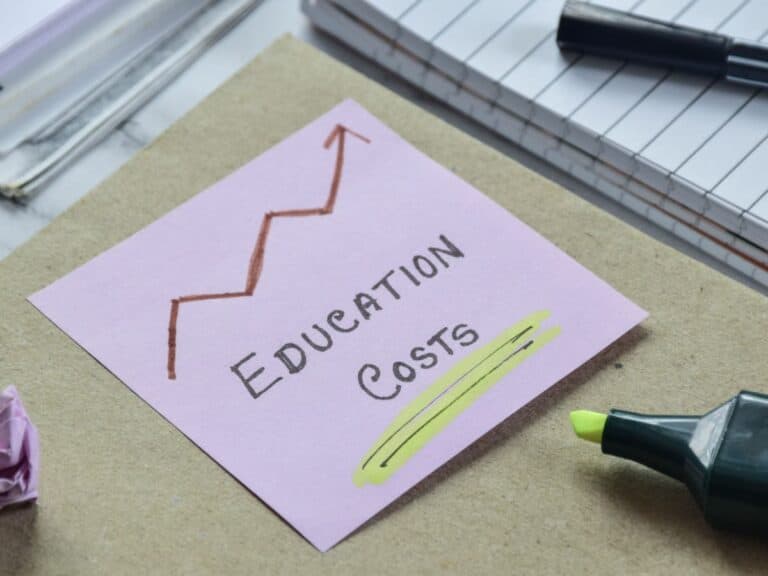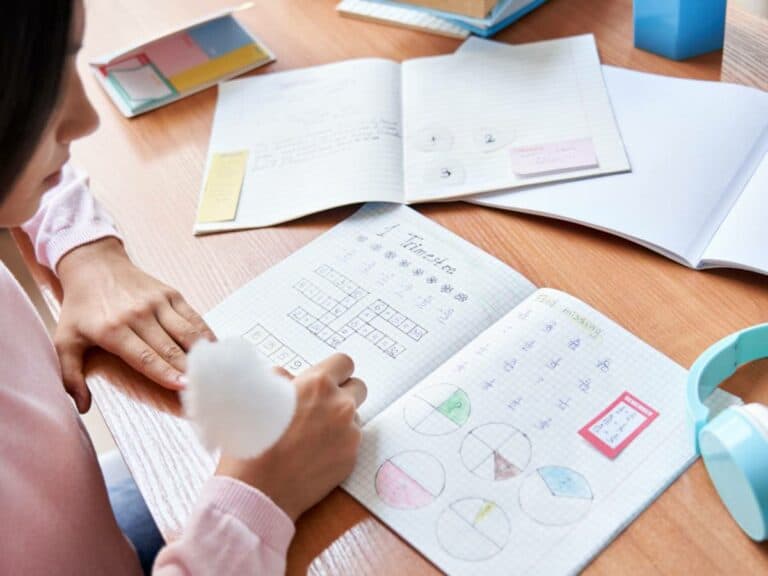How to Self-Study: 12 Tips
Because self-studying is a process that’s driven by you yourself instead of your teacher, it tends to be more effective compared to instructional learning. However, to reap the positives, it’s a must that you self-study in the right way.
To be effective, self-studying should be done at a designated study area and for the entire duration as a part of the goal. To help with information consolidation, minimizing distractions and taking notes as well as undergoing self-tests are a must. Taking breaks is essential for the student to remain focused and motivated.
Feel like studying on your own at home isn’t doing you any favor? Maybe you’re doing it all wrong.
In this post, I will discuss the different steps on how to self-study effectively, thus allowing you to prepare for your upcoming tests, whether they are everyday classroom quizzes or major exams like the midterms or finals, or whether they are standardized ones such as AP exams or the SAT or ACT, which can have an impact on college admissions.

1. Decide on the Best Time To Study
Before anything else, figure out when you are able to focus more.
Some students are early worms, while others are night owls — to which group you belong will depend on when you have the most energy and when your mind is most active.
Needless to say, the best time to self-study is the time of the day when you can concentrate on the learning materials before you instead of other things, including taking a trip to dreamland.
According to scientists, self-studying is more effective from 10 am to 2 pm and from 4 pm to 10 pm.
On the other hand, according to psychologists from Notre Dame University, students tend to remember new information better just before they hop into bed to sleep.
They add that catching some Z’s immediately after studying is like telling the sleeping brain which information to consolidate and allow you to remember the following day.
However, of course, nobody knows you better than yourself — you can forget what the experts say if you are certain that you are able to study more effectively at your preferred time of the day.
Read Also: Is It Bad to Study at Night?
2. Eat 10 to 30 Minutes Before
Did you know that something as simple and enjoyable as eating can help you shine on campus?
Studies confirm that eating a moderate amount of food prior to self-studying not only allows students to concentrate better but also helps them to get higher scores on tests.
But don’t just eat anything that you can find in the kitchen or in the refrigerator — opt for food that properly fuels the brain.
Some wonderful examples include those that are rich in protein (meat, poultry, nuts and legumes), omega-3 fatty acids (oily fish, eggs and seeds) and antioxidants (dark chocolate, vegetables and fruits, including especially berries).
Food high in sugar and trans fats as well as highly processed products should be avoided at all costs.
It’s also a good idea to steer clear of eating a very large meal before hitting the books. That’s because it will pull more blood to your digestive tract than your brain, which can make you feel sleepy.
Eating 10 to 30 minutes before studying helps give enough time to reinstate proper circulation to the brain.
3. Make a Dedicated Study Space
For most students, the best place to study at home is an area that is free of distractions and provides enough privacy, comfort and lighting. It can be a small section of the bedroom or a spare room.
But it can also be a well-ventilated attic or basement with enough illumination. The point is it can vary from student to student and home to home.
Regardless of your chosen study area, remember to self-study in it every single time.
Sticking to a space designated for studying makes it less likely for you to be disturbed and distracted. Also, being in it allows your mind to associate it with learning, thus helping you to focus more on studying.
However, to some scientists, this age-old advice is already out-of-date — some of them agree that varying your environment while trying to learn something can help you retain knowledge better.
The way it works is like creating a new tab each time you self-study in a different place, putting all covered information in it.
But, as always, to each his own — it’s up to you whether you prefer the traditional or modern recommendation.

4. Gather All Materials
Laptop, notebooks, notepads, sticky notes, pens, highlighters, paperclips, calculator, textbooks, headphones — no matter the tools and materials you need for self-studying, make sure that they are within your easy reach.
The goal is to limit or completely fend off the need for you to leave your study table to grab something.
When studying at home, it’s wise to spend your time wisely, which can be hindered by having to constantly step away from your designated space for self-studying.
With everything you will need easily accessible, you can devote 100% of your allotted time and energy to whatever it is that you have to learn and master during the session.
It’s also a must to keep your study table neat and organized — without wasting time looking for some stuff and feeling stressed when you can’t find them right away, you can study more efficiently and, more importantly, more effectively.
5. Reduce or Avoid Distractions
Logging out of your social media site accounts or turning off your phone’s notifications is a must before you self-study.
Especially in this day and age when Facebook et al and texting are some of the top distractions among students, staying off the grid for the moment can help you zoom in on what matters the most: what you need to study.
It will also help a lot to tell your family members to keep it down and your friends to leave you be for a while because it’s time for you to focus on another important thing in your life: your studies.
But then it’s essential to keep in mind that some students find their self-studying more productive if there’s some sort of background noise like music, nature sounds or even a documentary or news broadcast.
As a matter of fact, background sounds can help boost concentration and productivity in some people.
As always, figure out what works best for you — background noise or no background noise.

6. Set a Self-Studying Goal
Coming up with a goal can help give focus and direction to your self-studying, thus keeping you from reviewing random lessons and reading random materials as well as devoting a random amount of time to the session.
As far as goal setting is concerned, there are a couple of acronyms to remember:
SMART
Specific, measurable, achievable, relevant, time-bound — that’s what SMART stands for.
Simply put, your study goal should clearly define what you will be doing. It should also enable you to keep track of your progress as you inch closer and closer to what you want to achieve for that particular study session.
And speaking of which, you should set a goal for the day that aligns with a bigger objective such as getting a high SAT score. Of course, self-studying needs to have a specific timeline for completion.
KISS
Another thing to remember when setting a goal is to keep it short and sweet — KISS.
Based on a report by the Learning Center at the University of North Carolina at Chapel Hill, students can accomplish more if they keep their study sessions short but intense.
Doing this can help them get more things done with very little wasted effort as compared with drawn-out studying that can make self-studying sessions feel like a complete drag.
7. Count on a Timer
There’s no point in setting a realistic and attainable goal if you will not stick to it.
And that is why using a study timer can prove to be beneficial, especially among students who tend to get distracted easily or are known to be not that very good at adhering to the original plan.
Getting your hands on something fancy is unnecessary — you can steal the kitchen timer for a while or install a free countdown timer on your phone.
No matter your preference, having a study timer can help you adhere to your timetable so much better, such as spending 5 minutes on each of the 5 fundamental rules of algebra.
A study timer will also come in handy when taking a practice test, which we will talk about shortly — so keep reading!

8. Review Materials ASAP
The best time to review something that you have just learned is as soon as you possibly can, preferably within 24 hours. Doing so will help consolidate newly acquired information and keep you from having to relearn it.
Based on the SQ3R study method, a strategy named after its 5 steps namely survey, question, read, recite and review, it’s extremely important that you carry out an overall review after studying new material within the next day for maximum comprehension and memory, thus preventing the details from vanishing into thin air.
Experts add that you can lose up to 80% of what you have learned in class if you do not review it ASAP.
What’s so nice about this method is that you only need to spend a few minutes reviewing since any new information is still fresh in your mind — you simply have to quickly go through the material all over again and any notes made.
But just because you reviewed the latest lesson doesn’t mean that there’s no need to go over it again in the future — you will still have to!
As a matter of fact, according to a report by Oregon State University, it will take you a repeated and deliberate effort to move data from your short-term memory to your long-term memory.
Otherwise, some of the key details are very much likely to slip away after a while.
9. Use Reliable Sources of Information
To improve understanding, consider using multiple sources. After all, the ability to look for as well as evaluate the reliability of websites, textbooks and others and also finding answers to questions on your own is vital for lifelong learning.
Reliable — that’s the operative word.
For instance, if you are considering physics your Achilles heel, you may rely on a book written by an expert in the subject matter.
One very good example would be Must Know: High School Physics. Available on Amazon, it’s written by Chris Bruhn, who has also written a couple of McGraw Hill books on AP Physics.
By the way, the said item is a part of the 12-series books on various challenging high school courses. Some of them include Must Know: High School Computer Programming and Must Know: High School Trigonometry.
Since your grades and admissions chances to your dream school are the ones on the line, it’s important to make sure that you are getting your information from sources that you can count on.
Otherwise, you could end up obtaining totally wrong and useless details that can clutter up your mind and keep you from retrieving the right info.
10. Take Notes in Class
It’s not just during class when you should be taking notes but also when reviewing at home.
But first, thanks to speech-to-text transcription, it’s possible for note-taking to be a thing of the past inside classrooms — not only can the said technology generate documents automatically that are nearly 90% accurate but can also be tagged and integrated with various other learning materials.
However, scientists agree that taking notes in longhand is the best way to learn new materials.
Proof?
Students who take notes on a laptop tend to fare worse on quizzes compared to those who took notes the traditional way,.
It’s exactly because of this that new legislation requires cursive writing to be taught again to students.
Taking down notes can help you in your self-study pursuit in different ways.
For one, it helps improve focus and attention to detail, which means it can serve as an effective defense against distractions.
And other than boosting comprehension, it’s proven to increase memory retention, which is everything when it comes to remembering information.
Here’s a smart tip: jotting down notes on index cards allows you to study as well as create flashcards that can come in handy when it’s time to do some brushing up as a major exam or the SAT or ACT nears.

11. Undergo Self-Tests
And speaking of which, the use of flashcards is just one of the various ways to study through self-testing. Some other ways to go through some self-tests are by taking quizzes online and purchasing practice test books.
On Amazon, there’s never a shortage of books that allow you to hone your knowledge and test-taking skills.
For instance, there’s The Princeton Review SAT Premium Test Prep edition, which includes 9 full-length SAT practice tests.
Gearing up for your AP US History exam?
Consider checking out Barron’s AP US History Premium edition, which not only boasts of 5 practice tests but also a timed online AP exam option.
Self-testing allows you to know which things you know and which things you don’t, thus allowing you to determine which chapters or topics you need to focus on more during your next self-study session.
Undergoing a self-test repeatedly can be beneficial if you are a bad test-taker due to having test anxiety.
12. Have Small Breaks
Refrain from thinking about self-studying as a marathon session. Instead of studying for hours on end each time, break up your review into small and more manageable sections, separated by short breaks.
A report by the University College London (UCL) says that studying in short and repeated sessions with frequent breaks helps increase concentration and facilitate the memorization of new information, too.
It adds that it can help boost your energy levels, which allows you to stick to the timetable, and reduce your stress levels, which is vital for staying motivated.
Cornell University agrees — taking purposeful breaks, which can be as short as 5 minutes, allows you to refresh both your mind and body, thus helping you to concentrate so much better and also make your review more productive.
But it’s also important to mind what you do during a break from self-studying.
Instead of accessing your social media sites, take a walk outside to breathe in fresh air. Or you may quickly do a household chore or drink water to stay hydrated or have a light snack to remain energized.
You may also take a power nap if you feel heavy-eyed, of course remembering to set the alarm clock to keep your power nap from 10 to 20 minutes max.
Self-studying can make your transcript look its best. Especially if the goal is to gain admission to a selective school, it can help increase your chances — as far as academic factors like GPA, class rank and standardized test scores are concerned — of getting an acceptance letter by helping to raise the figures that will ultimately be included in your college application.
But just as important as making self-studying a regular habit is doing it properly.
Above, I gave you the steps to take on how to self-study, thus allowing you to have a much better idea of how to go about it the next time so that you can maximize the perks that come with having regular sessions of it.
Disclaimer: The views and opinions expressed in this article are those of the authors and do not necessarily represent those of the College Reality Check.




![College Dropout Facts [11 Jaw-Dropping Facts]](https://collegerealitycheck.com/wp-content/uploads/dropping-out-of-college-2143265297-768x576.jpg)
